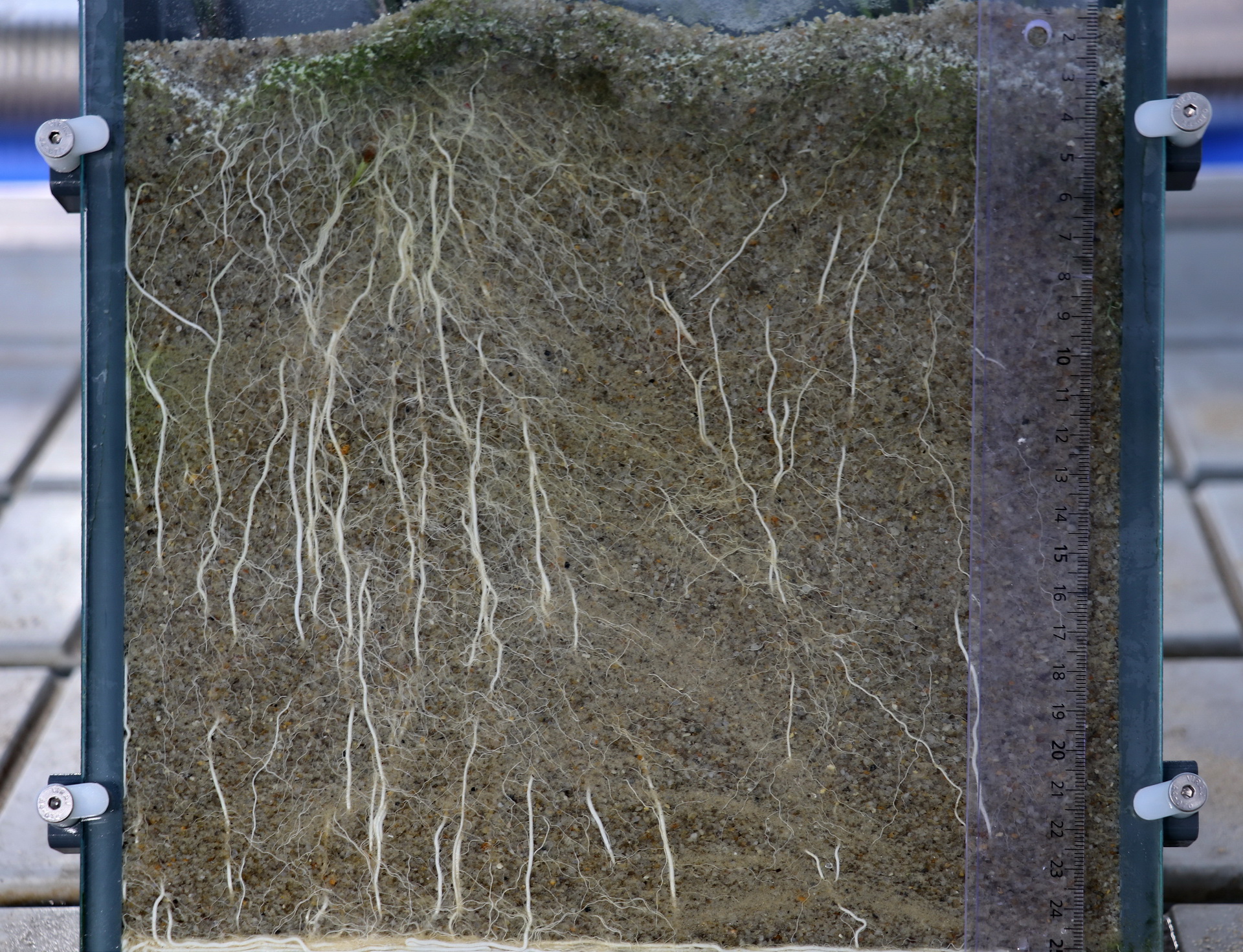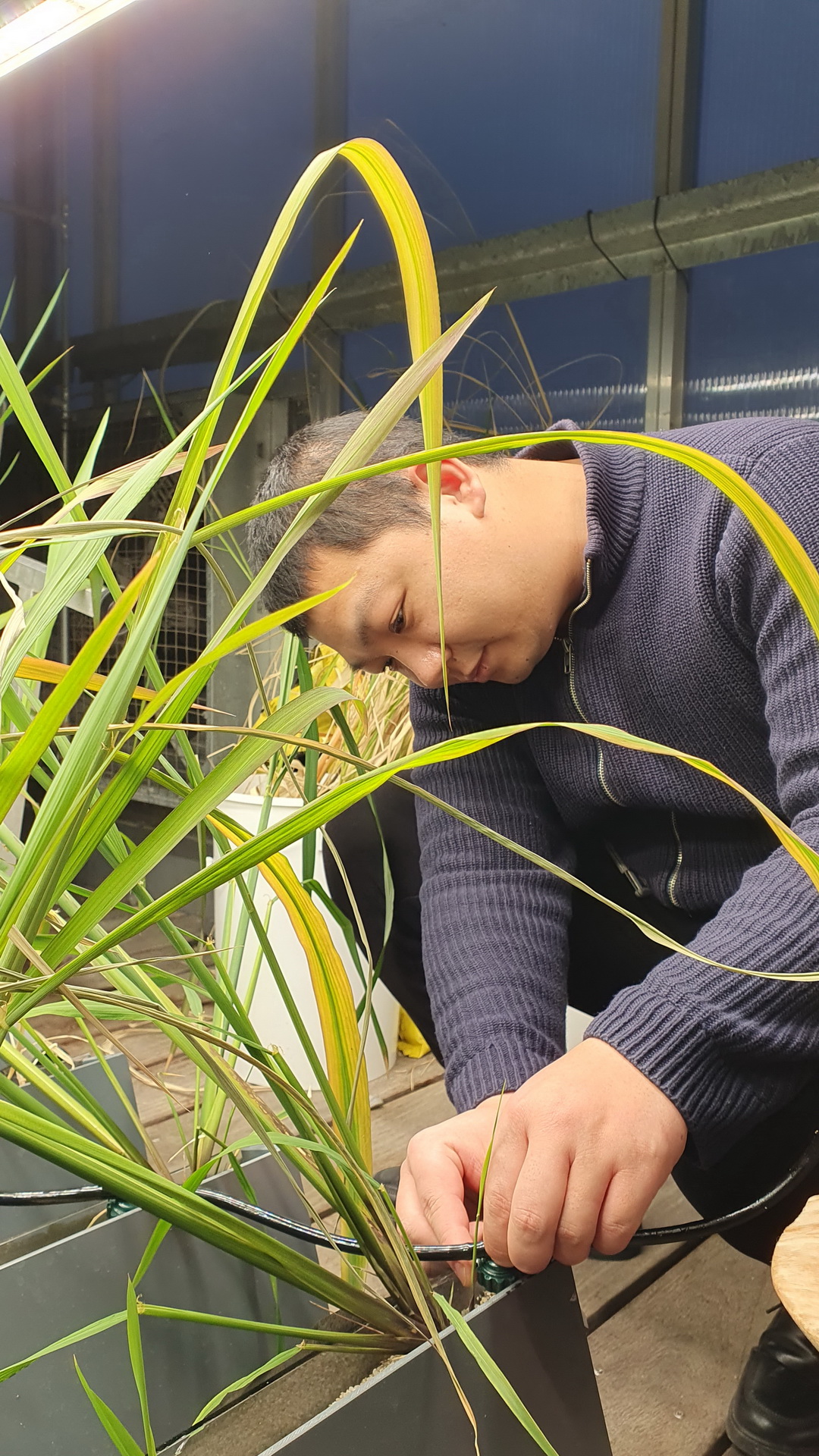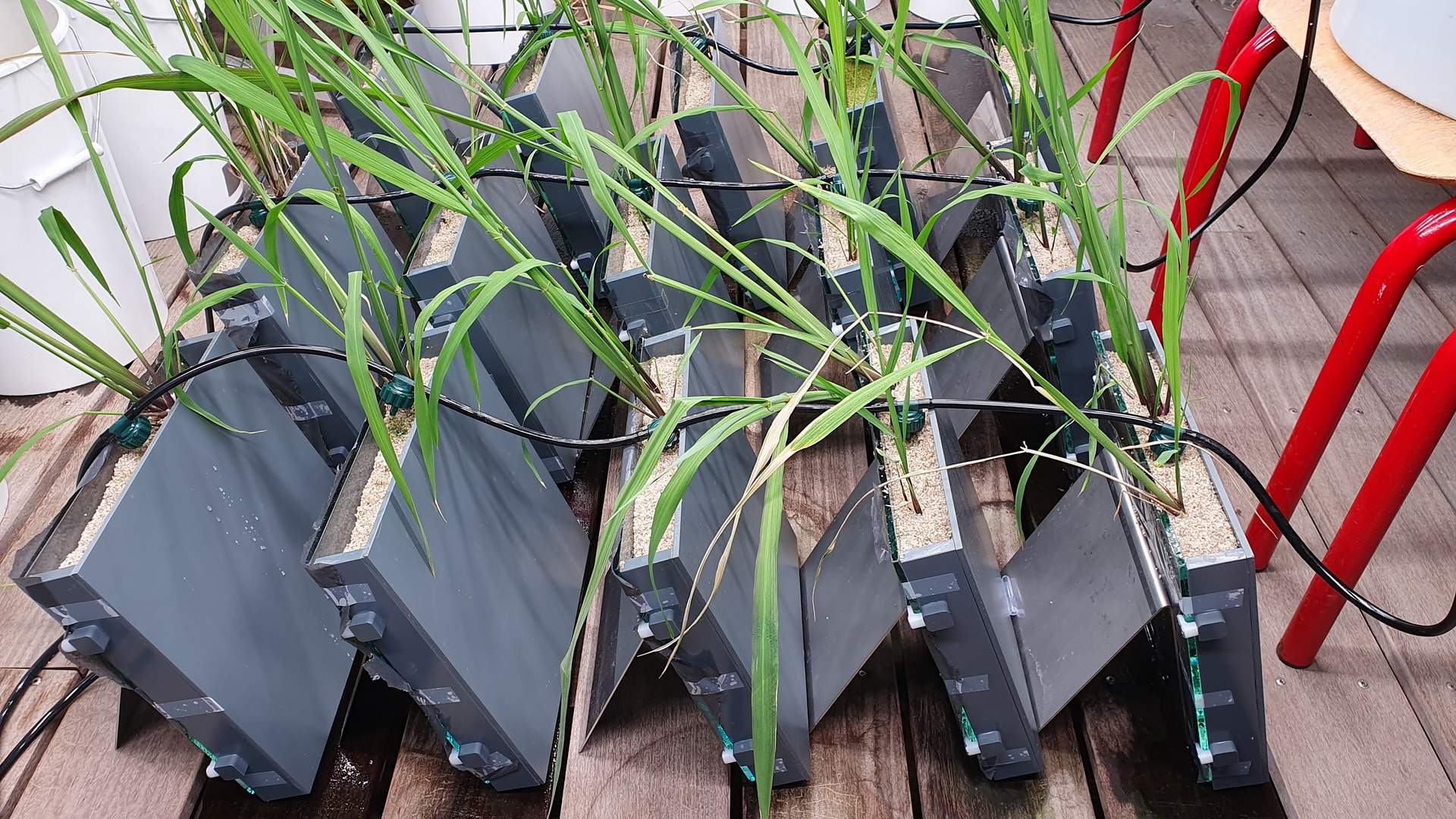Our new custom-made rhizoboxes enable studies of roots in sand or soil culture
Song is studying root responses to gradients in water availability, and in principle this can be done by using hydroponics where plants are grown with the roots hanging into a liquid nutrient solution – exactly the same way as modern nurseries are growing tomatoes. Waterlogging can be simulated in deoxygenated liquid agar, a draining soil can be mimicked in an aerated nutrient solution and drought can be simulated by adding inert osmolytes (such as PEG-6000) to the solution. However, Song wanted to apply a water gradient in a real soil or sand culture so we asked our workshop to design a set of rhizoboxes.
Photographs of roots growing along the glass plate in a rhizobox. The roots were formed under waterlogged conditions by Oryza longistaminata, which is the model plant that Song is using in his experiments.

It is a bit of a tedious job to get the dripping system to work properly and in a reproducible way. But in the end Song succeeded with establish three contrasting water availabilities in his rhizoboxes: waterlogged (soil flooding), draining (field capacity) and drought (about 10% of field capacity).
Rhizoboxes are flat boxes with one side made from transparent material such as glass so that root growth can be followed with time. In our case, we also made the glass plate detachable so that Song could sample root segment at discrete time points without having to harvest the entire plant. The boxes have worked very well, and some of the finding are different to the finding that he already has obtained from hydroponics.
In conclusion, the rhizoboxes will remain in service for the years to come, although I personally prefer nutrient solutions in most situations; these are just easy to reproduce and a lot easier to sample…
Photographs of roots growing along the glass plate in a rhizobox. The roots were formed under waterlogged conditions by Oryza longistaminata, which is the model plant that Song is using in his experiments.
It is a bit of a tedious job to get the dripping system to work properly and in a reproducible way. But in the end Song succeeded with establish three contrasting water availabilities in his rhizoboxes: waterlogged (soil flooding), draining (field capacity) and drought (about 10% of field capacity).

